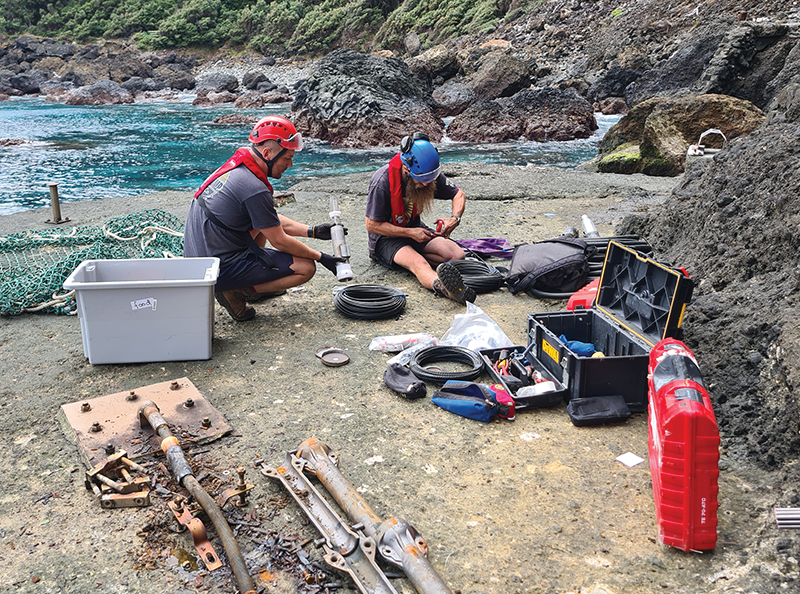Case Studies | Data & Internet Connectivity
GNS Science
Engineering a Seismic Shift in New Zealand’s Resilience to Tsunami Threat.
The Challenge
GNS Sciences’ Raoul Island geological monitoring station has the potential to save hundreds, if not thousands, of lives. Maintaining a stable and consistent line of communication at all times is crucial to sustaining the Pacific Tsunami Warning Centre, but increasingly challenging given the highly remote Pacific Ocean location.
The Solution
Pivotel worked closely with GNS Science to understand their unique and critical system requirements and recommended an alternative solution that places Raoul Island in the main beam of the satellite, providing a highly secure, high-speed, resilient connection, utilising the existing antenna, LNB and BUC to keep costs down.


“Thanks to the certainty that Pivotel and Intelsat’s resilient, secure satellite solutions offer, everyone at GNS Science, and of course thousands of others who are now safer from the threat of a tsunami arriving on their shores without warning, can sleep much easier at night. ”
The Logistical Challenge
Situated at a major tectonic intersection point, Raoul Island plays a crucial role in the monitoring network administered by New Zealand’s GNS Science. The organisation operates over 650 monitoring sites across the South Pacific and Aotearoa New Zealand’s shaky isles, to increase the nation’s resilience to the threat of natural disasters, such as earthquakes, volcanic eruptions and, especially, tsunamis.
Located 1,100 km north-east of New Zealand's North Island, Raoul Island (formerly Sunday Island), the largest of the main Kermadec Islands, has been a source of vigorous volcanic activity and dacitic explosive eruptions and major earthquakes. With the ability to offer New Zealand’s coastal communities 90 minutes forewarning of a potentially catastrophic tsunami, the GNS Science station at Raoul Island has the potential to keep people and property safe, and save lives.
As recently as March 2021, Raoul Island, which was uninhabited at the time due to the COVID-19 pandemic, experienced a powerful 8.1 magnitude earthquake. This prompted a tsunami warning for much of New Zealand, resulting in the evacuation of some coastal regions of the North Island.
Evacuations can only occur if lines of communication between the Island Station and the Mainland remain open and connected. However, given its remote Pacific Ocean location, the establishment and maintenance of stable, consistent and resilient communications pose a number of logistical challenges for GNS Science.
Prior to partnering with Pivotel, GNS Science had adopted a number of other satellite solutions to monitor Raoul Island. However, all proved less than optimal as the networks could not offer anything more than fringe coverage, which resulted in patchy, unreliable and marginal service
The Logistical Solution
With the need for fast, reliable and secure satellite data connectivity for its critical systems in a remote, often unmanned location, GNS Science sought Pivotel’s assistance. Pivotel worked with GNS Science to understand the overall solution requirements, current installation and its limitations and failure points.
After completing a deep dive into the technology, Pivotel introduced GNS Science to Intelsat and recommended its FlexEnterprise satellite service. Importantly, the Intelsat FlexEnterprise service places Raoul Island in the main beam of the satellite as opposed to being in fringe coverage and delivers a highly secure, high-speed and resilient global satellite internet service that is trusted by many of the world’s governments, telecoms and media companies.
Pivotel was able to specify a Very Small Aperture Terminal (VSAT) service through Intelsat‘s Horizons-3e (H3E) satellite that utilises the existing antenna, low-noise block downconverter (LNB) and Block Up converter (BUC). Apart from a new iQ Desktop+ Satellite Modem to ensure a secure and stable satellite internet service, utilising much of the existing hardware allowed Pivotel to keep costs down.
The result is an affordable solution that ensures GNS Science can continue to furnish its knowledge of tsunami hazards and risks with accurate data in near real-time.
The Outcome
After the installation was carried out on Raoul Island with on-ground support from GNS and support from Intelsat on the mainland, the service was commissioned in October 2021. The connectivity provides GNS Science with two fully functioning tsunami gauges on Raoul Island that operate on a resilient communication network, acting as a component in early warning systems for New Zealand with information about tsunamis caused by earthquakes, submarine landslides and eruptions.
Daniel Whitaker, Remote Infrastructure Management Team Leader from GNS Science said, “The VSAT link has been working reliably since commissioning and the service has been excellent. We enjoy a close and very productive working relationship with Pivotel. Our regular meetings with Pivotel and Intelsat have proven to be very useful and have allowed all parties to communicate freely with each other, providing quick outcomes and resolutions. We’re now confident that we can relay vital tsunami information in a timely manner.”
The Technical Details
Intelsat with Pivotel provides satellite internet services with high-speed, reliable connectivity when and where you need it.
Pivotel offers a range of portable, vehicular and fixed satellite internet terminals, service plans and accessories on the Intelsat network, ensuring you get the solution that’s right for you.
Ask a question
Do you want to know more about a Pivotel service plan, product or solution?
Ask our friendly Customer Care team here.
Find your local Pivotel Dealer
Did you know that we have a nationwide dealer network of over 160 dealers?
Find your local Pivotel critical communications expert here.